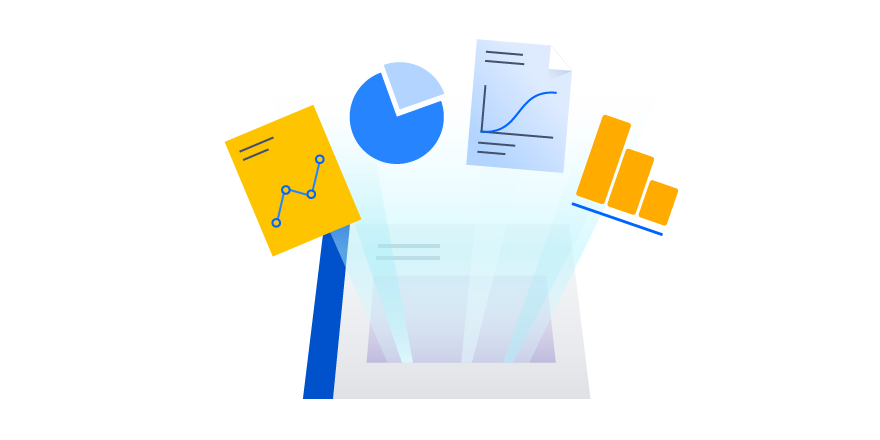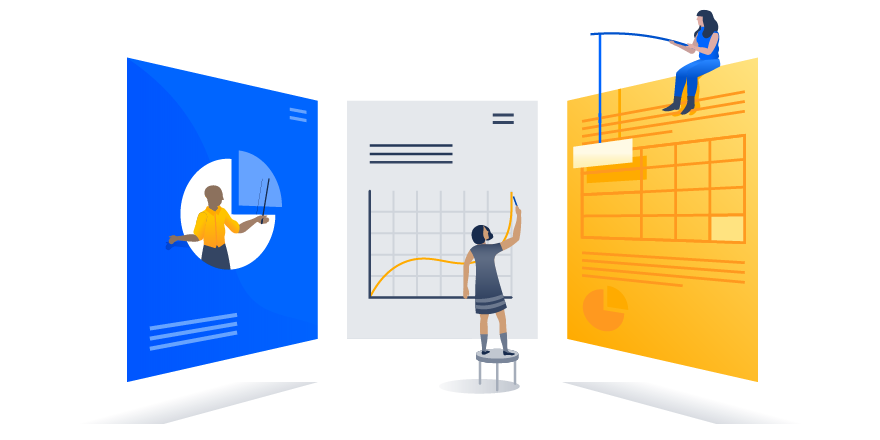Don’t you just love getting last-minute feedback from your boss right before your deadline? What about combing through a deluge of irrelevant-but-weighty comments from coworkers who aren’t even working on your project?
These are just a few of the problems that tend to come with stakeholder management — and they happen all the time. The good news is: they’re completely avoidable.
When you learn how to better communicate and work with your stakeholders, or the people who have a vested interest in your project, you can save yourself from these mishaps, develop better relationships with your teammates, and ultimately become a much more effective leader.
Here are some of the strategies that we use here at Atlassian for stakeholder management so that teams successfully execute project goals the first time – with no unexpected hangups.
First things first: determine roles and responsibilities

As you prepare to launch any project that’s going to involve other people, the first step needs to be conducting a stakeholder analysis.
Practically, this looks like a good old-fashioned brainstorm session where you consider and assess who this project’s outcomes are going to directly impact. In particular consider:
- Whose workflows will be affected
- Whose approval you’ll need to complete the project
- Whose end product will change
These people are your stakeholders.
Not all of these stakeholder groups are going to be invited into the project, but it’s crucial to know who is impacted by what. Determining roles and responsibilities early is key, especially if you’re working on a specific project.
Action step: conduct a stakeholder analysisGrab a piece of butcher paper or fire up Confluence page. Create a grid with potential stakeholders on the left axis of the page and potential project outcomes across the top of the page. Fill in what those project outcomes would mean for your stakeholders. Use what you discover to help you decide which stakeholders you’re inviting directly into the project.
As a project manager, your job is to become a master of definition. Letting people know what is expected of them, and maybe more importantly, what isn’t, becomes a critical act of leadership.
Defining roles will help give stakeholders clarity about what skills, insight, and time they need to bring into a project. Clear definition of responsibilities will also minimize the amount of “empty space” that a stakeholder might perceive in the project’s process. Eliminating empty space reduces the likelihood that people will offer up irrelevant opinions that slow work down.
Action step: run the roles and responsibilities playWe highly recommend running the Roles and Responsibilities play from the Atlassian Team Playbook. Clearly defining everyone’s place in a project will get people on the same page faster.
You want your key players to shine, and by defining roles and responsibilities, you’re keeping your stakeholders focused on what matters and setting them up to succeed.
Get the kick-off meeting right
Setting roles and responsibilities only works if everyone understands how those roles will function and support your project’s desired outcome. With a great kick-off meeting, you can make sure that all of your stakeholders are on the same page regarding these matters before a project or initiative begins.
The kick-off meeting is where you ensure buy-in, set stakeholder expectations, determine a check-in cadence and communicate how decisions will be made. This is also the opportunity to let stakeholders poke holes in your plan. Creating clarity from the start will facilitate good relationships between the various teams and people connected to a project.
Action step: build your kick off meeting around feedbackKeep your talk-time to a minimum. This means you can give an overview of the project, but then let the rest of your team speak for the majority of the meeting as they give feedback and ask questions. This is a very practical way to show that you trust your team. Plus, it’ll help you get the best ideas on the table early.
If you’re a project manager or facilitator assembling a specific team for the first time, consider using the DACI play from the Atlassian Team Playbook to specify who the project’s drivers, approvers, and contributors are, as well as who needs to stay informed on decisions. Ensuring that a clear decision-making framework is in place now will help avoid potential bottlenecks in the project later.
Document, document, document

Laying out all of the relevant information about a project on the table (or Confluence page!) for stakeholders to see communicates trust and can eliminate unnecessary questions or meetings. It also empowers stakeholders to make decisions quickly and offer quality problem solving faster.
Documentation is how we know we’re taking transparency seriously. It’s all talk until it’s in writing. Using an open and accessible form of documentation legitimizes our value for transparency and doesn’t leave anybody out (Email is not your friend!). Be sure to develop a habit of documenting everything relevant to a project, and inviting key stakeholders to do the same.
Action step: determine your documentation strategyYou’ll need to figure out 1) where all of your project information is going to live, 2) who will have access, 3) what project information needs to be recorded and 4) how often recording needs to happen. Confluence provides an easy way to ensure that you’ve got a centralized, open, and detailed tool to facilitate documentation.
Set expectations early
Managing stakeholder expectations is like taking vitamins. You might not want to do it, but things will be so much better if you do.
Different stakeholders may want different, more specific information — but in general it’s important to give visibility to what’s happening on a project or initiative. Clearly communicating timelines allows stakeholders to plan for how long the project will take and can curb unnecessary scrutiny that might end up slowing things down.
Action step: communicate early and oftenAnticipating what stakeholders want to know based on their roles and communicating ahead of scheduled project updates can go a long way in alleviating stakeholder anxiety. It shows you’re on top of things and minimizes the chance that high-level stakeholders (who aren’t involved directly in the work) will feel the need to jump in.
This seems like an appropriate time to talk about stakeholders who aren’t directly involved in the work of the project, but are still interested or need to be updated on the project’s progress (The I’s in the DACI play mentioned above.) Most likely, these stakeholders will offer unsolicited opinions on what’s happening if you let them.
The key here is to keep these stakeholders heavily informed early and clarify that they’re being informed now so that they don’t start inserting opinions late into a project. This might feel intimidating, but setting these kinds of expectations early helps everyone involved stay focused on their role. And, if anyone objects to this, the DACI clearly delineates who is actively “Contributing” and who is “Informed”.
Find the right check-in cadence
With roles defined, expectations set, the kick-off meeting completed and a culture of transparency established, all that’s left to do is figure out your communication plan.
This plan should help you maintain all the hard work you’ve done on the front end to set your stakeholders up for success. Set a regular check-in cadence with the tools that are appropriate for your team (email, Confluence documentation, stand-up meetings, phone calls, Slack messages, one on one meetings, etc.).
Action step: map out your communication planIf you don’t set a plan for how you’re going to communicate with stakeholders, you’ll find yourself checking in “as you think of it,” which is exactly what we want to avoid. Setting dates, determining methods and taking notes of your check-ins (documentation!) is a must. You may even want to consider connecting project goals to each stakeholder’s communication plan so that you don’t lose track of why you’re communicating with that person. Build a page in Confluence to write your plan and set reminders on your calendar so that things don’t fall by the wayside.
The right check-in cadence will probably vary from stakeholder to stakeholder (someone who only needs to be informed of project progress may not require as many check-ins as a product development team). The one thing that is constant in any stakeholder communications plan is the need for it to happen regularly. Falling out of rhythm is a surefire way to derail a project and demoralize stakeholders. Set this expectation early, and follow through every time so that your engagement process has integrity to it.
Stakeholder management is all about collaboration
Ultimately, stakeholder management is about empowering people and teams to function at their best while minimizing hang-ups along the way. Doing the hard work up front to give stakeholders clarity will start you off with a strong foundation. That practice, along with giving stakeholders easy access to information, results in better functioning projects.
For more tips, click below to learn how Confluence can help guide you through stakeholder management.
